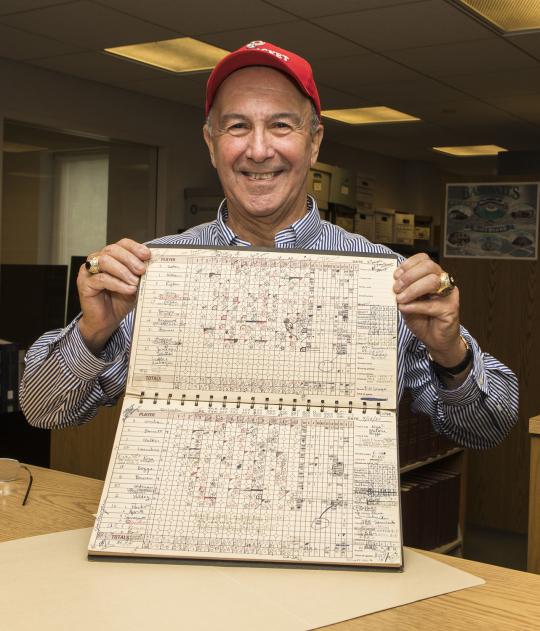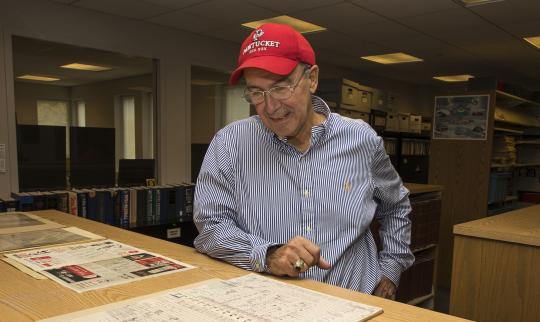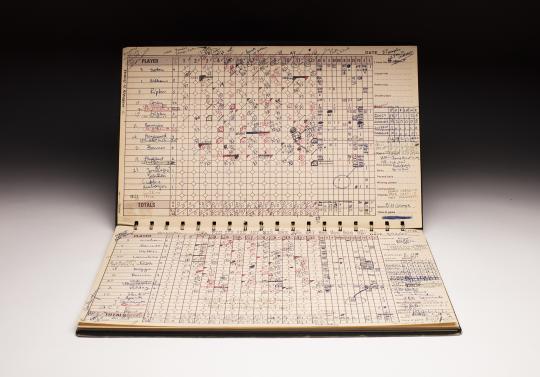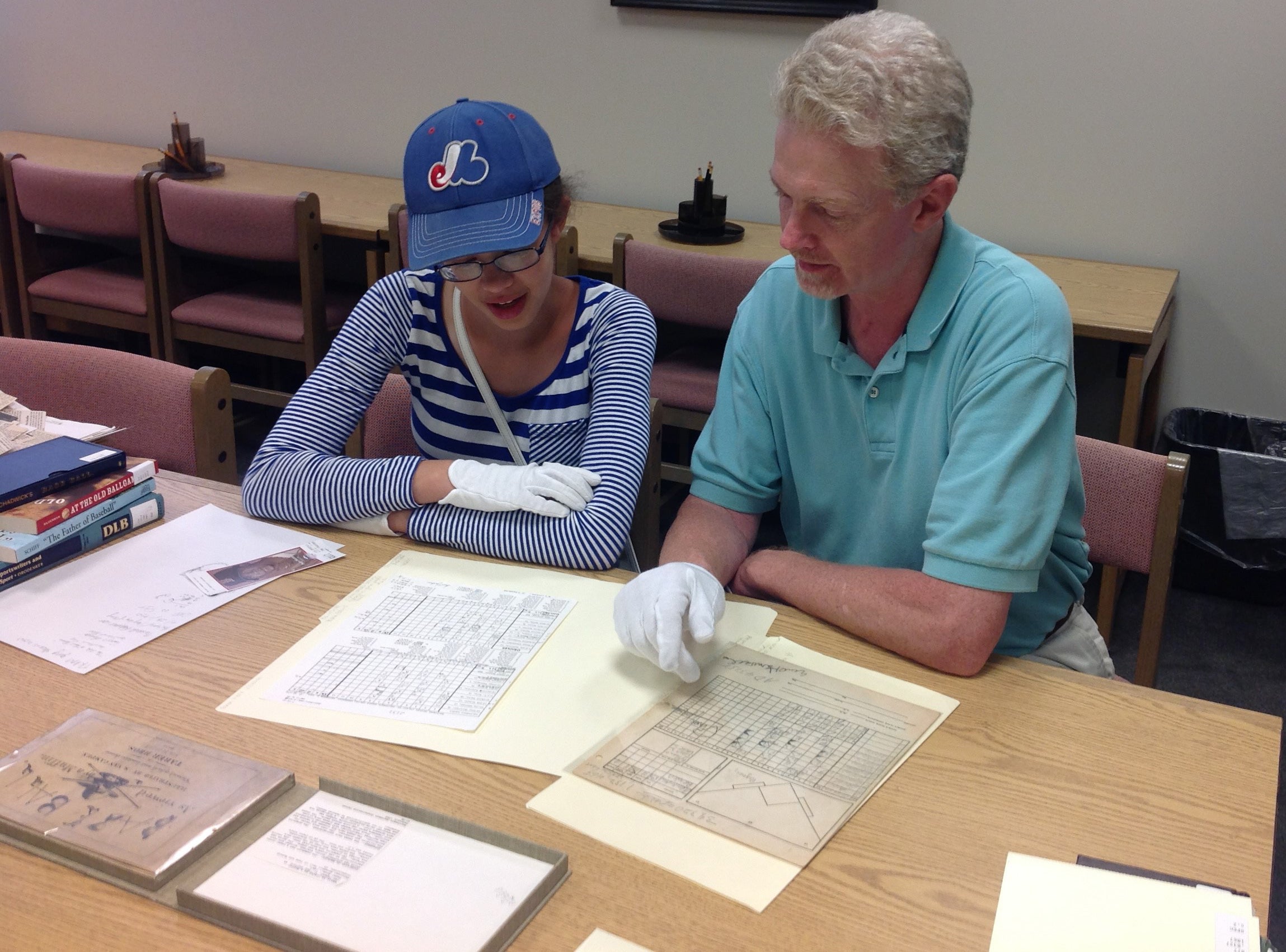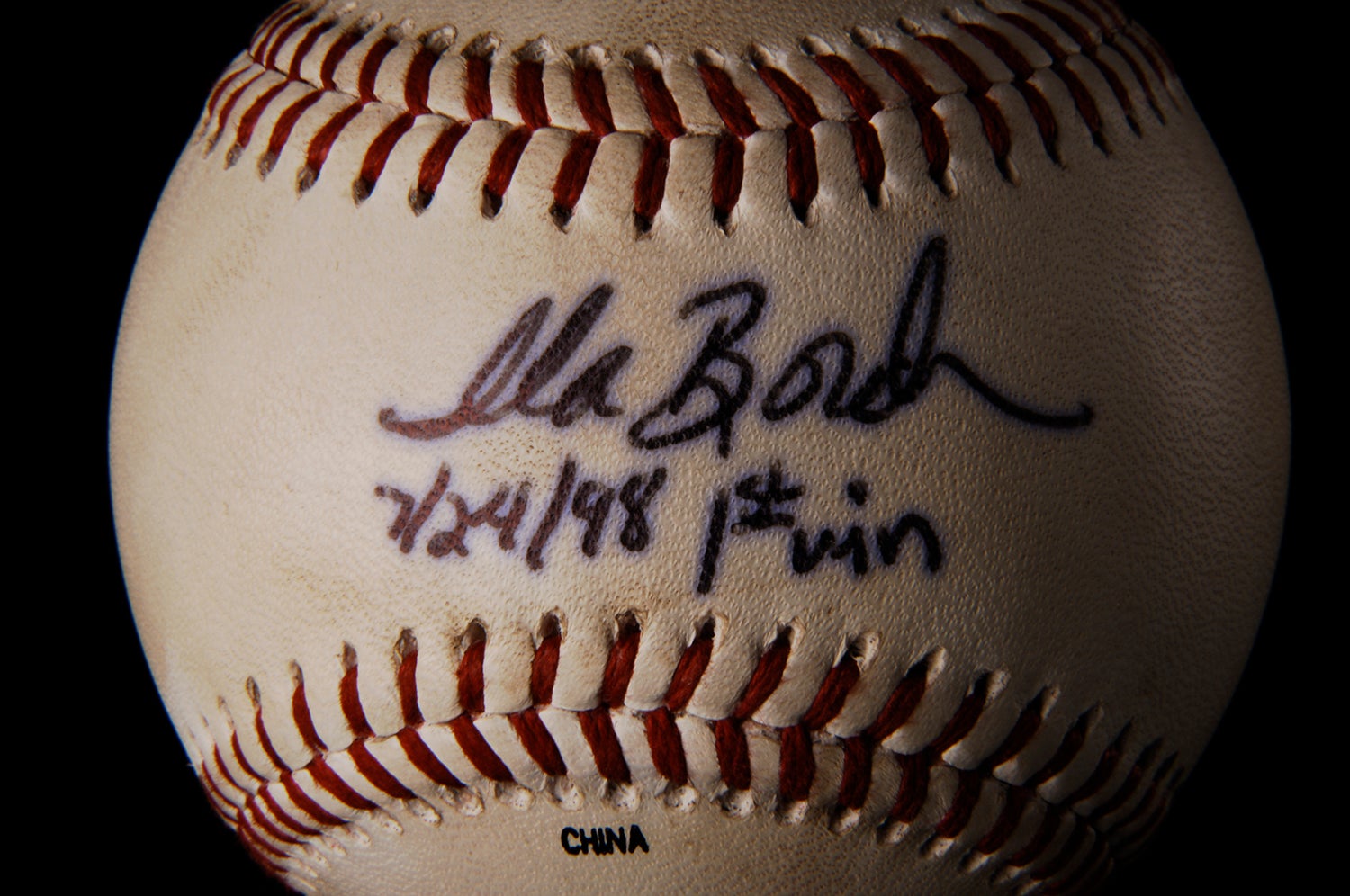- Home
- Our Stories
- Official scorer from baseball's longest game visits Museum
Official scorer from baseball's longest game visits Museum
Three days after the third game of the 2018 World Series game set a Fall Classic record by going 18 innings, the official scorer of the longest game in professional baseball history visited the National Baseball Hall of Fame and Museum to reconnect with his own historic handiwork.
As the official scorer for the Triple-A Pawtucket Red Sox, Bill George was there when career minor leaguer Dave Koza singled in the bottom of the 33rd inning on June 23, 1981 – ending the longest game in professional baseball history.
The International League contest between the Rochester Red Wings and Pawtucket – which featured future Hall of Famers Cal Riken Jr. and Wade Boggs – began on the night of April 18, and 8 hours 7 minutes later, at 4:07 a.m. the next morning, the game, tied at 2-2 after 32 innings, was suspended.
Hall of Fame Membership
There is no simpler, and more essential, way to demonstrate your support than to sign on as a Museum Member.
Resumed some two months later on June 23, it ended after just 18 minutes when Pawtucket’s Koza slapped a 2-2 curve from Cliff Speck into left field with no outs and the bases loaded to score Marty Barrett.
“It’s a thrill to see the scoresheet again. It’s the only thing that ever made me famous,” said a laughing George, a lawyer who arrived in Cooperstown from his home in Rhode Island with friend Tom Covill. “It brings back memories. I’ve got a copy of it in my home, so I see it all the time, but it’s a thrill to see the original. It really is. It was a wonderful memory.”
Among the artifacts donated to the Hall of Fame from this memorable contest were the bat Koza used and the ball he hit to knock in the winning run, the Rochester cap worn by losing pitcher Steve Grilli, the visiting lineup card, baseballs signed by both the Rochester and Pawtucket teams, tickets to the April 18 game and the June 23 continuation, and George’s score book in which he recorded the game.
“The Pawtucket owner and I knew the score book definitely belonged in the Hall of Fame,” George said. “I actually had a business trip in upstate New York later that summer and I delivered it, along with Dave Koza’s bat.”
The jewelry on the ring finger of George’s left hand – commemorating his part in the longest-ever baseball game - is a constant reminder for him and a conversation starter commemorating those unforgettable days in 1981.
“Every day of my life I wear this ring,” said George, who arrived sporting a red Pawtucket Red Sox cap. “The owner of the PawSox gave out these rings to everybody who participated in that game. They did the 20th anniversary of the game in the spring of 2001, and he had these rings made up. I wear it every day. I’m very proud.
“So does it come up? It comes up when I’m meeting with clients, they ask about the ring. Almost every week it comes up. I can talk about it all day.”
George, 72, began working for the Pawtucket team in 1977 before being named official scorer the following season.
“In the spring of 1977 I wanted to get into baseball. I was practicing law, but I really wanted to get into baseball. I just went into the Pawtucket owner’s office and put my heart on the table and said, ‘I love baseball and I want a job. I’ll push a broom, I’ll sell popcorn, I’ll do whatever you want me to do,’” he remembered. “He thought it was a little crazy but he said, ‘Okay, you can keep statistics for the team in the booth and help out in the press box.’
“The next year the official scorer died, and the club was impressed with me enough to offer me the job.”
Asked for memories of his 15 minutes of fame, George first recalls the temperature that April day it all began.
“The game took place on a Saturday, the night before Easter, it was very cold,” he said. “I think it was 28 degrees when game was first stopped, there were only 19 people left in the stands from the 1,740 when it started, and the bullpen pitchers were burning bats in a metal barrel to stay warm.
“When it was finally suspended in the 32nd inning, I walked into my home and my wife was still sleeping. She then said, ‘What are you doing up so early?’ not realizing I had been gone all night. But I was still excited and my adrenalin was pumping because I knew that I was involved in something big. And that morning I got a call from some baseball fanatic on the West Coast asking if it was true.”
A big league strike was underway when the game resumed on June 23, bringing it even more attention for a baseball-starved fan base.
“They resumed it six weeks later and I got phone calls and letters and notes from all across the country,” George said. “There were over 200 media members covering the resumed game, including representatives from Japan, when there was usually just a couple.”
Because of the uniqueness of the game, George had to improvise his scoring methods when recording the game in his score book by using blue ink for the first 12 innings, red ink for the next 10 frames, and a black pen for innings 23 through 32.
“I’m out of pens at this point,” he said. “I had blue, red on top of that, then black ink on top of that. For the resumption on June 23, I bought a green pen and did that in green.”
Family demands ultimately led to 1981 being George’s final season serving as an official scorer for the Paw Sox, though he did go on to serve for many years as a statistician for the New England Patriots.
“I had a pretty short career as an official scorer,” he said. “I had a mortgage, I had kids, I had a real job, and it was too much. I decided I better take care of my family. But I’ll always have the memories of serving as the official scorer for the longest game in baseball history.”
Bill Francis is the senior research and writing specialist at the National Baseball Hall of Fame and Museum

